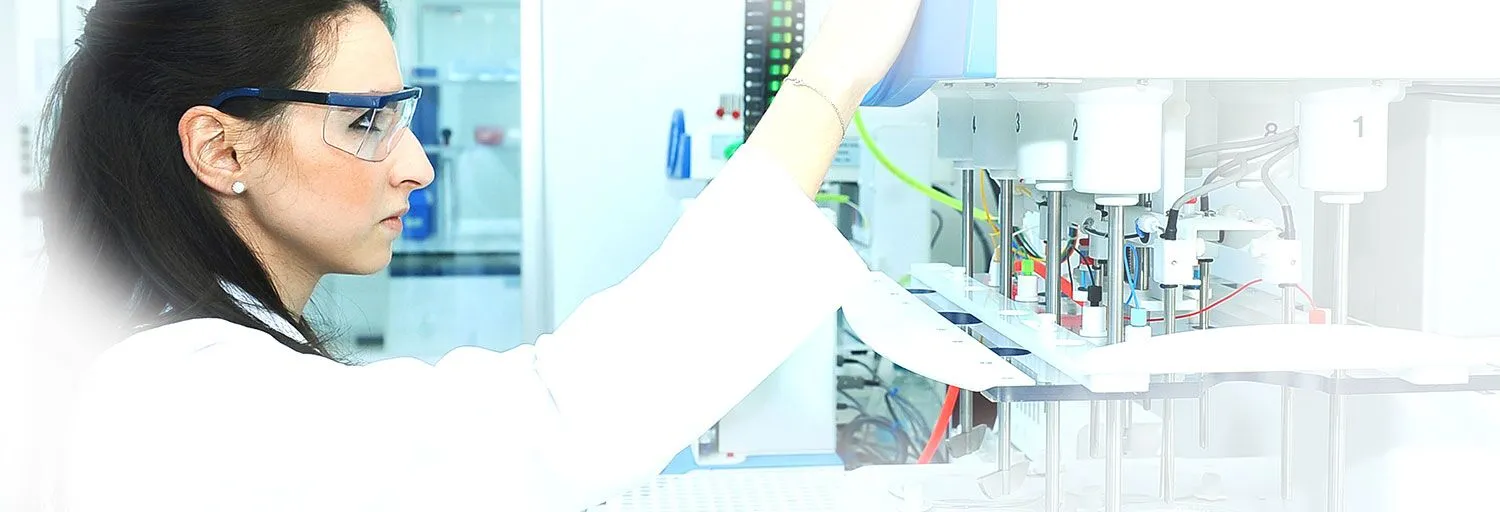Contact Us
- Solutions
- Resources
- About
- Contact Us
close
Optional callout banner for highlighted news or events
Learn More
Just one drug per 1,000 that enter pre-clinical trials will advance to human clinical trials.1 And this is not because the other 999 drugs are unsuitable for therapeutic use, but rather because of mistakes made in the early stages of development. Some of these mistakes include inadequate R&D funding, an undefined product development plan, not understanding formulation characteristics, not implementing a phase-appropriate analytical method development, and rushing through pre-clinical/Phase I and II studies. Partnering with a contract development and manufacturing organization (CDMO) to guide you past these obstacles can possibly improve the odds of getting your drug to market.

Former Food and Drug Administration (FDA) Commissioner Dr. Scott Gottlieb noted in 2019 that early drug development costs have risen more than those for late-stage drug development. This can be attributed to the agency’s increased regulatory burden as well as more complex molecules, raw materials costs, and testing.
Industry experts agree that pharmaceutical companies invest in research (discovery and pre-clinical stage) and development (clinical stages) costs in anticipation of future profits not to make an immediate profit, which makes it different from other corporate activities. Drug companies’ R&D spending decisions are often dependent on three primary factors:
Pre-clinical R&D expenditures typically constitute a considerable share of total R&D spending. The Tufts Center conducted a series of studies to estimate private sector R&D costs of drugs. The 2016 study estimated the total costs between pre-clinical and clinical stages. Estimated pre-clinical out-of-pocket costs (in 2013 dollars) were $430 million and $1.1 million after capitalization; clinical stage out-of-pocket costs were $965 million and $1.5 million capitalized. Therefore, pre-clinical costs were estimated to represent 32% of total out-of-pocket costs and 42% of total capitalized costs.2
Not surprisingly, the costs to conduct clinical trials are higher than pre-clinical costs because trials involve more people and more time. Thus, the costs of Phase I and II clinical trials conducted in the United States range from $1.4 to $6.6 million and $7 to $20 million, respectively.3
Based on these significant numbers, controlling costs during early stage development is imperative. This can be achieved by sharing technical information as early as possible with your CDMO. This will enable the outsource provider to complete the project in less time, with fewer mistakes.

A comprehensive plan can significantly accelerate the development timeline and increase the likelihood of marketing success. Pharma insiders state that you can save 30% on early drug development timeline – from lead candidate to Proof of Concept – with a prospective strategy and plan.
According to Regulatory Professionals4, while perfect planning is not critical, a lack of any planning will jeopardize meeting milestones. Having a plan in place at the outset will enable adjustments to be made accordingly at each phase.
To optimize a drug development program for a new therapeutic entity, thoroughly think through the following steps:
The drug development plan should include critical product information such as:
Key to a drug development plan is a target product profile (TPP), which guides pre-clinical development by establishing critical milestones and ensuring that pre-clinical development supports the intended clinical trial design and therapeutic use. A TPP may vary from compound to compound, but each profile generally includes therapeutic indication(s); market size, competition, and differentiators; expected clinical use, including key trial endpoints; drug target and mechanism of action; patient age range; dose route, form, and frequency of administration; bioavailability and duration of action; safety, precautions, and contraindications; chemistry, manufacturing, and controls (CMC) profile, including solubility, manufacturing process, formulation, storage conditions, and stability; patent status and any modifiers of exclusivity (i.e. orphan drug status).5
Also essential in the planning phase is determining the geographic scope of commercialization and the applicable regulatory guidelines4. Thoroughly review these commercial considerations early on for strategic market planning:

At the early stage, investigators should already be thinking about the final product, how it will be administered to patients (oral, injection), and the design of dosage forms.6 Weighing the advantages and disadvantages of different dosage forms early in the development process informs planning in the later stages of development.
Finding the “perfect” dosage form depends on the needs of the active pharmaceutical ingredient. Additionally, the ideal dosage form should have broad applicability. This is why tablets and capsules are common, as a variety of release profiles, orally disintegrating tablets, and fixed-dose combinations are possible.
Dosage form characteristics of bioavailability, stability, and dose homogeneity will impact final dosage form. If there is a possibility that a drug candidate may not demonstrate appropriate bioavailability, consider developing more than one dosage form so that changes can be made without impacting timelines. This is where a CDMO that understands the biopharmaceutics classification system (BCS) is critical. Outsourcing dosage form development to a CDMO can play a key role in delivering ever more effective and user-friendly drugs that meet the market challenges of the future.7

Sadly, 90 percent of drug development projects seeking success in Phase 1 clinical trials are destined to fail. Fortunately, drug developers can use a phase-appropriate method for process development to try improving that statistic. Reliable analytical methods are required to test and qualify incoming materials, in-process methods, equipment, formulations, drug substances, and drug products. These methods are critical for analyzing the various formulations that may be investigated for a final dosage form and are integral to quality control in good laboratory and good manufacturing practice settings.8
A phase appropriate method to drug process development applies an understanding of what is needed and when for each phase of the drug development process to better support the overall Validation Master Plan. The key to achieving a cost-effective, success-oriented outcome is building the plan around a logical sequence of events and following it with discipline as you take the drug product through the regulatory process.
For example, Phase 1 often stirs debate regarding the level of testing required to show that clinical batches meet the minimum USP requirements and the limited specifications established at this early stage. A phase-appropriate method will lean toward the minimum requirements. However, experienced CMDO process development professionals will conduct analysis required in later phases: testing blends for uniformity or going beyond USP requirements for tablet or capsule dissolution and uniformity of dosage units.
Going beyond what FDA requires by phase does not violate establishing a validation track record, but it does expend time and money. Conducting activities in Phase I that are aligned with Phase II and beyond consumes resources that may not be necessary if Phase I is not successful. Using resources earmarked for Phase II or III should be triggered when accomplishing the outcomes of the previous phase, thus delivering cost effectiveness based on success.

A significant investment in time is a necessity in the early stages of drug development — during the multiple cycles of designing and synthesizing new candidate molecules, testing them, and determining which molecular properties to improve.9 It is not uncommon for pre-clinical trials to last three-and-a-half years or longer, plus another year for Phase I and two more years for Phase 2 studies.1
As a result, pharma companies may have a desire to rush to get their API developed so they can test their drug in the clinic and get it to market to realize a return on their drug development investment. Sponsors wind up putting significant pressure on themselves and their CDMO to move favorable compounds from the lab to the clinic. Speed to market is further promised by the FDA’s four regulatory approval pathways aimed at making drugs available and to reach the market as quickly as possible: Priority Review, Breakthrough Therapy, Accelerated Approval, and Fast Track.
Approaches to shortening timelines and enabling rapid entry into clinical development include risk assessment, limiting development activities, using process and analytical platform approaches, and efficiently integrating all aspects of production of drug substance and drug product,” said Susan Dana Jones, principal consultant at BioProcess Technology Consultants, at the 2018 BioProcess International Conference and Exhibition.10
An efficiently managed program – with no major setbacks in development – can progress quickly and efficiently if activities and controlled and performed by a CDMO. This can result in robust pre-clinical drug development efforts have the potential to strengthen the overall value of the drug portfolio by reducing risk, developing more robust data, and potentially shortening the overall regulatory and commercialization pathway.11
Like what you read? Share with your network: